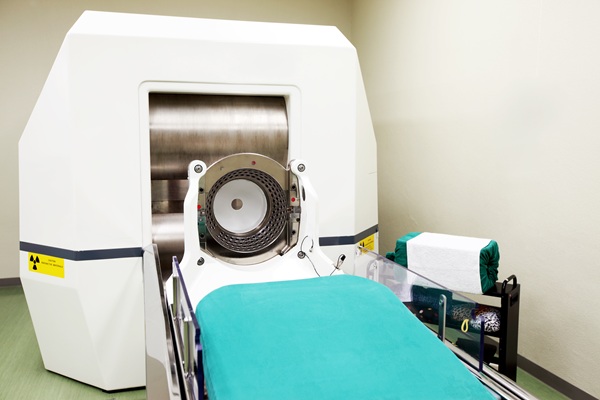XLIFPhoenix, AZ
eXtreme Lateral Interbody Fusion, abbreviated to XLIF®, is a type of minimally invasive spinal fusion surgery. It can treat various lumbar spinal disorders, including but not limited to lumbar degenerative disc disease, scoliosis, and more. During an XLIF procedure, the surgeon fuses the lumbar spine from the patient’s side.
XLIF surgery is available at Dr. Randall Porter, M.D., in Phoenix and the surrounding area. We can help relieve your pain and correct your spine. Call us today at 602-603-8951 to schedule an appointment or learn more about our services.
Understanding XLIF
As mentioned above, XLIF is a type of minimally invasive spinal fusion surgery. It has many advantages over more invasive types of spinal fusion, including:
- Minimal blood loss
- Minimal post-operative discomfort
- Minimal tissue damage
- Quick recovery
- Small incisions and scars
Additionally, as a minimally invasive procedure, XLIF is meant to treat only spine disorders with the least possible tissue disruption. This allows for minimal tissue-related damage and a reduced recovery time.
XLIF & Interbody Fusion
XLIF is also a type of interbody fusion surgery. In other words, Dr. Porter will remove the disc in front of the spine and replace it with an implant containing a bone graft. This primes the two vertebrae to fuse while also maintaining the normal alignment of the spine.
There are two other types of interbody fusion surgeries: anterior interbody fusion (ALIF) and posterior interbody fusion (PLIF). In an ALIF procedure, the surgeon must move the organs in the abdomen and some major blood vessels to the side. This allows them to reach the spine. In a PLIF procedure, the surgeon must cut significant muscle groups to approach the spine from the back. XLIF is much less invasive in contrast, requiring only an incision in the side of the body.
What Happens During XLIF Surgery
During the procedure, Dr. Porter will position the patient on their side while they are under anesthesia. He will then use X-rays to locate the affected disc and mark the skin directly above the disc. Afterward, he will make a small cut in the lower back, pushing away the peritoneum from the abdominal wall.
Once he has made a second cut in the patient’s side, Dr. Porter will also insert a dilator into the incision and use X-rays to ensure that it is in a good position above the disc. Finally, he will insert a probe through the psoas muscle. Since the nerves exiting the spinal column are close to the psoas muscle, Dr. Porter will use neuromonitoring — typically in the form of electromyography (EMG). In particular, the XLIF procedure utilizes a NuVasive® probe system to protect the nerves by detecting their position during surgery.
Potential Risks of XLIF
Like any other surgical procedure, XLIF comes with a unique set of potential risks and complications. These may include:
- Deep vein thrombosis
- Failure to fuse
- Further progression of existing spinal disease
- Infection
- Muscle weakness
- Neurologic injury
- Pain that persists after surgery
- Pain that persists at the site of bone graft harvest (in the hip)
- Pneumonia
- Stroke
- Urinary tract infection
- Vascular injury
The lumbar plexus is especially vulnerable during XLIF surgery, particularly when the procedure involves approaching the lower lumbar segments. This is because the retractor used for the necessary places pressure on the nerves running through the iliopsoas. While EMG monitoring can reduce this risk, neural compromise from retraction on the muscle is still possible. Depending on the patient’s size and the exact location of the fusion, the risk can run from thigh pain to weakness in the quadriceps. Dr. Porter takes the time to discuss all possible complications with each of our patients, and our team will take all necessary measures to minimize any risks.
Call Us Today
Living with a lumbar spinal disorder can reduce your overall quality of life. We at Dr. Randall Porter, M.D., can help. Call us today at 602-603-8951 to schedule an appointment or learn more about our services.
Frequently Asked Questions
What is it like to recover from XLIF surgery?
Every patient has a different recovery path. While some notice an immediate difference in their preoperative symptoms after surgery, others find that their symptoms take some time to go away. In any case, all patients should expect some pain at the incision site. Such pain will naturally reduce over time; in the meantime, any discomfort should be easily managed with prescribed pain medication.
How long does it take to recover from XLIF surgery?
Since an XLIF procedure splits muscles without cutting through them, many patients can walk around as soon as the night after surgery. The number of nights a patient must spend in the hospital will depend on multiple factors, including their overall health, the severity of their preoperative condition, and the number of vertebral levels that were fused. As such, some patients can return home the same day as the procedure, while others may need to stay for a few weeks. Most patients can return to their everyday activities after a few months.
Is XLIF right for me?
As previously mentioned, XLIF is designed to treat only specific types of lumbar spinal disorders. In particular, it is not meant to treat patients with conditions at the lowest level of the spine. Additionally, XLIF cannot address high-grade spondylolisthesis or bilateral retroperitoneal scarring. However, the procedure is commonly used to treat spinal deformity, recurrent lumbar disc herniations, and more. Dr. Porter can discuss all your best treatment options in a one-on-one consultation.
What is a minimally invasive procedure?
While traditional surgical procedures use a single larger incision, minimally invasive procedures use one or more smaller incisions to access the targeted area. During a minimally-invasive procedure, Dr. Porter uses a dilator and retractor system to spread the tissues and see the spine. In an XLIF surgery, this system is known as MaXcess®.
Is XLIF safe?
Yes. XLIF has been thoroughly studied for safety and efficacy. One study shows it to produce comparable results to ALIF, and another study showing that 85% of respondents would undergo the procedure again.





